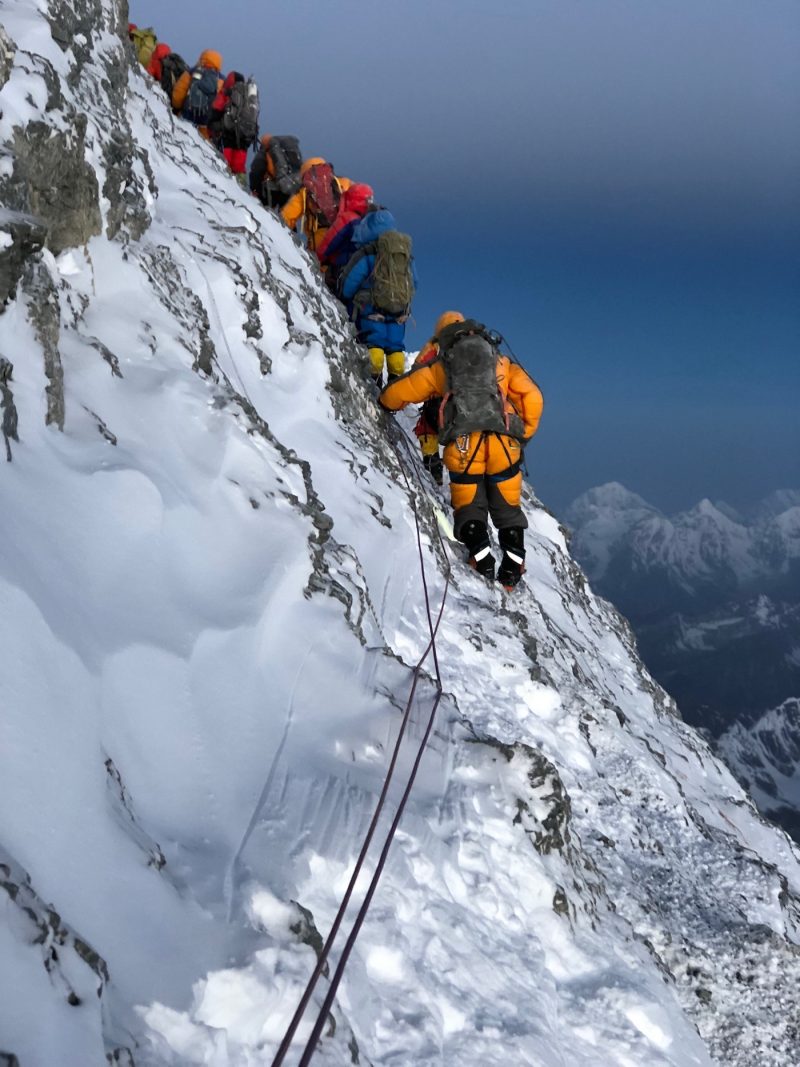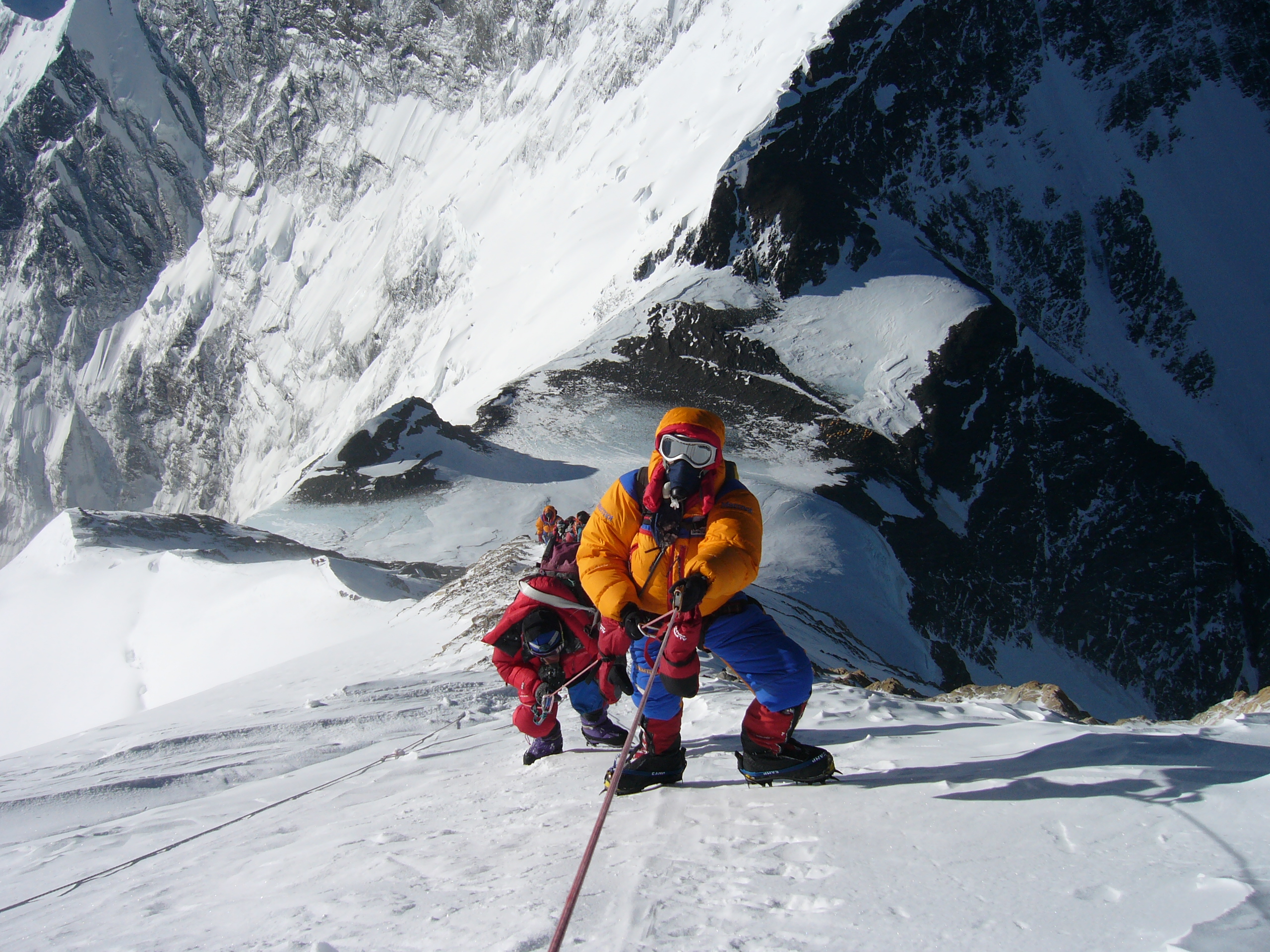- Shaunna Burke, an exercise psychologist, has climbed Mount Everest three times. She summited once, in 2005.
- According to Burke, climbers who choose to stay in the moment, instead of imagining they are somewhere else, are more successful in Everest’s “death zone” – an altitude above 26,000 feet, where the body cannot get enough oxygen.
- One of the most important parts of climbing Everest, she said, is mentally preparing to make it up and back down the mountain, instead of just focusing on reaching the summit.
- Visit Business Insider’s homepage for more stories.
If climbers want to summit Mount Everest, they have to brave its “death zone,” the part of the mountain above 8,000 meters. At that altitude, the air has so little oxygen that the body starts to die, minute by minute and cell by cell.
“Your body is breaking down and essentially dying,” the Everest climber Shaunna Burke told Business Insider. “It becomes a race against the clock.”
Last week, at least 11 people died climbing Everest, the tallest peak in the world at 29,029 feet (or 5.5 miles) above sea level. Some succumbed to dehydration and exhaustion after summiting. Donald Lynn Cash, a 55-year-old from Utah, “collapsed as soon as he reached the summit” and died there, according to The Kathmandu Post. Expedition companies are blaming overcrowding on the mountain, saying the extra time climbers had to spend in the death zone led to the fatalities.
Burke has climbed Everest three times and summited once. She now works as an exercise psychologist at the University of Leeds in the UK and has studied the mental strategies of successful Everest climbers, some of which she used herself.
According to Burke's experience and research, mountaineers who report that they are internally motivated by the desire to be outside and on a mountain, rather than by sponsorships or the ability to later say they reached the summit, tend to be more successful at reaching the top.
Burke also said climbers who stayed connected with the present moment, instead of disassociating from their experience, were more successful as well.
She used some of these tips herself when summiting Everest - a feat Burke accomplished alone after watching her partner break his leg while climbing alongside her.
'I heard him scream my name'
Burke first visited Everest in 2003 to assist with the Discovery Channel miniseries "Ultimate Survival: Everest," but she didn't climb past Camp 2 (about 21,000 feet up). A year later, she returned and reached Camp 4, which sits at the edge of the death zone - 26,000 feet in altitude. But a windstorm kept her tent-bound, and the 80 mph gusts forced Burke to end the climb there.
The third time was the charm, but that 2005 trip was not without its challenges.
Burke and her partner at the time, Ben Webster, elected to climb the mountain as a duo, relying only on each other and a Sherpa crew, instead of joining a larger expedition. During one of their acclimatization trips up to Camp 2 and back, disaster struck.
"The weather had been very warm that year," Burke said. "The Khumbu ice-fall was unstable and seracs were collapsing."

Burke was in front of Webster, making her way down the mountain.
"I heard him scream my name at top of his lungs," she said. "I stopped dead in my tracks. I knew by sound of his voice that something bad had happened."
Webster had stepped on an errant piece of ice that sent him flying sideways. He nearly fell into a deadly crevasse but stopped himself by wedging his elbows sideways. The fall had snapped his tibia and fibula.
"His leg was at a 90-degree angle," Burke said.
Fortunately, a mountain rescue team was able to evacuate Webster to Base Camp, then to Kathmandu for treatment.
Burke decided to push on, attempting a solo summit climb with her team of Sherpas. The team was the first to summit that year, reaching the top on May 30, 2005.
Motivation in the 'death zone'

Burke's Ph.D. research involved examining what motivates climbers to risk their lives in the dangerous conditions of death-zone altitudes. At those heights, climbers' brains and lungs are starved for oxygen, their risk of heart attack and stroke increases, and their judgment quickly becomes impaired. Their bodies become dehydrated, they can't sleep, and most are wracked by severe coughs.
Burke said enduring through those conditions is what makes mountaineering unique.
"Typical athletes are building up to game day, they're mentally tougher and bodies stronger and more energized," she said. "Whereas in mountaineering, on summit day, your muscles are atrophied, you have insomnia, you're exhausted."
Often, Burke said, a climber's motivation for entering the death zone changes over time. According to her research, mountaineers who have more experience reaching high summits reported that they were internally motivated: Their perseverance through physical hardship was driven by the desire to connect to nature and just be on the mountain.
She found that, by comparison, less experienced mountaineers generally reported that they were driven by external motives such as escaping their lives, achieving the goal of summiting, or gaining recognition or sponsorship.

'The summit is only halfway'
Burke said that although all climbers want to reach the summit, that objective alone can be a problematic.
"The summit is only halfway," she said. "Your ultimate goal should be to make it back to camp alive."
Often, climbers reach the top "on empty," she added, expending all their energy on the way up without considering whether they'll be able to safely turn around and climb down.
"At that altitude, it takes everything to put one foot in front of the other," she said. "If you haven't judged how much gas you have left in the tank, then you can't make it down. That's why some climbers sit down and don't get back up."
But Burke added that it's easy to sit back and judge people from the safety of sea level. When you're on the mountain, she said, climbers can be overcome with "summit fever," an obsession to reach the top. A 2004 study revealed that, for some climbers, reaching Everest's summit became part of their identity. They wanted to reach their goal so badly that they made rash decisions in pursuit of that objective.
"I can see how easily that could happen," Burke said.
She added that she believes successful mountaineers can connect to the moment they're in and be fully mentally dialed in to where they are, how their body is doing, and what their surroundings look like. By contrast, some marathon runners and other endurance athletes have been known to disassociate from their physical discomfort, disconnecting from their thoughts and feelings in order to persevere.
But imagining you're on a tropical island instead of in the death zone isn't going to increase your chances of survival on Everest, Burke said.
"With mountaineering, it's absolutely crucial that you pay attention to what's going on around you and inside your body," she said. "You need to pay attention to small signals that your body is giving you."

